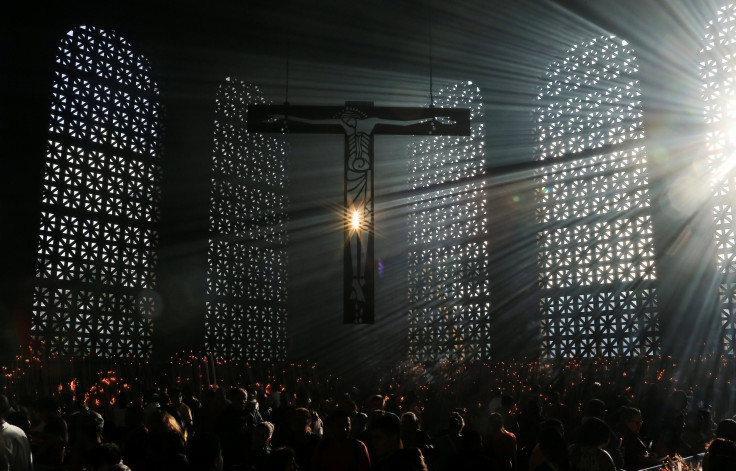What Are Near-Death Experiences, And How They Differ Among People

Near-death experiences (NDE) are mystical phenomena for which researches have come up with some scientific explanations of some of the common features surrounding them. No one really knows what happens when you die, but there are some common aspects from the moments people go through when they nearly die.
A NDE is a profound psychological event that happens in people's lives when they are in situations they feel will bring them certain death, which brings with it a sense of crisis and patterns of perceptions, creating a recognizable overall event, that has been called NDE, according to the International Association for Near-Death Studies website.
In the U.S., a Gallup poll showed 3 percent of the population saying they have had such experiences. It does not just happen in America but across cultures everywhere, with there being written records of them dating back to ancient Greece.
Read: Can Near-Death Experiences Be Caused By Electrical Pulses?
However, an interesting observation is that not all of these experiences coincide with actual death such as in the case of one study, which studied 58 people who recounted their NDEs. Of them all, it was discovered about 30 were in no actual danger of dying even though most of them thought they were going to.
Despite several studies about the NDE phenomena, "scientific literature on the temporal structure of near-death-experiences is still quite limited."
A lesser explored topic of research is whether people experience different phenomena in a certain sequential order. A study, published July 26th, delved into the matter of whether everyone has similar experiences during a NDE.
"To the best of our knowledge, no study has formally and rigorously investigated whether NDE features follow a fixed order or distribution," said corresponding author Charlotte Martial (University of Liège and University Hospital of Liège, Belgium). Martial added: "The aim of our study was to investigate the frequency distribution of these features, both globally and according to the position of features in narratives, as well as the most frequently reported temporality sequences of the different near-death-experience features."
The researchers analyzed written first-hand NDE accounts and looked at whether specific aspects of these experiences occur in the same order for different people. The study showed although NDE have some universal elements, the orders in which these occur are very individualistic. They cannot be the same for all.
The analyzers collected written accounts from 154 individuals who have gone through a NDE. Researchers also analyzed the specific circumstances in everyone's experiences and then studied the order of what people felt or thought they saw. It was found, on average, a person experienced about four different phenomena during a NDE — most frequently occurring were feelings of peacefulness, seeing a bright light, and encountering spirits/people, whereas the two most uncommon experiences were speeding thoughts and precognitive visions.
If we go by the chronology of the experiences, 35 percent of subjects experienced an out-of-body experience as the first feature of their NDE and 36 percent of them experienced toward the end that they were returning to the body.
However, the most commonly shared order of occurrences were out-of-body experiences, experiencing a tunnel, seeing a bright light, and finally feeling a sense of peace.
People's lives change once they go through a NDE as told by Nancy Rynes, a former atheist scientist turned spiritually-oriented author and consultant. On Jan. 3, 2014, an SUV rammed on to her bicycle in Lafayette, Louisiana where she sustained 24 broken bones, each with multiple breaks, including nine vertebrae and five ribs. Parts of her pelvis, sternum and collar bones were broken. She said there was no count on the total number of breaks.
"My higher-self exited my body and watched what was going on," Rynes said. She said a "classic" NDE occurred after three days when she was on the operating table after receiving general anesthesia. The whole experience lasted for just a few minutes. She said she entered a timeless landscape of beauty and love, something which was similar to a NDE.
"(It's) weird from a physical perspective to say that you feel love as if it were a force, but it was like an energy field that I could feel everywhere — love and peace and acceptance to an incredible level — that's indescribable really," she said. "It wasn't necessarily from me, it was from outside, almost like if you've been under the high tension energy wires and you can kind of feel the buzzing of the electricity."
For some, NDE makes them feel closer to God. During a kayaking trip in 1999, Dr. Mary Neal was trapped underwater when her kayak capsized. She was unable to breathe for around 15-20 minutes and during that time, she went through a NDE that made her feel the presence of God, Jesus Christ and angels.
Read: Michael Douglas’ ‘Near Death’ Hoax Slammed By Rep, Is ‘Clean’ Of Tongue Cancer
During the experience, she says she was told by God that her family would be facing an upcoming tragedy and that she had to mentally support them to survive through the tough times. 10 years later, her son was killed in a car accident at the age of 19.
Neal was convinced that it was Jesus who made her survive the kayaking mishap after she awoke with two broken legs and lung complications. Following a month in hospital and then six weeks in a wheelchair, she recovered. She also wrote a book "To Heaven And Back," which was published in May 2012.
© Copyright IBTimes 2025. All rights reserved.






















